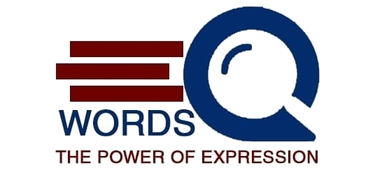What Is a Rhetorical Device? Definition, List, Examples
Rhetorical devices are tools you can use when constructing arguments and speeches. This guide contains rhetorical devices’ definition, types, and examples.
Each rhetorical device is a distinct tool that can be used to construct an argument or strengthen an existing argument.
Rhetoric is used whenever you try to inform, persuade, or argue with someone. You’ve felt the power of rhetoric if you’ve ever had an emotional reaction to a speech or changed your mind about an issue after hearing a skilled debater’s rebuttal.
You can improve your ability to process and convey information while also strengthening your persuasive skills by developing a basic understanding of rhetorical devices.

Rhetorical Device Types
Rhetorical devices are loosely classified into four categories:
Logos
Devices in this category seek to persuade and convince the listener through logic and reason, and will typically use statistics, cited facts, and official statements to make their point and persuade the listener.
Pathos
These rhetorical devices make emotional appeals. Invoking sympathy or pity in the listener, or making the audience angry in the service of inspiring action or changing their mind about something, could be examples of this.
Ethos
Ethical appeals attempt to persuade the audience that the speaker is a credible source, that their words carry weight, and that they must be taken seriously because they are serious and have the experience and judgment to decide what is right.
Kairos
This is one of the most difficult concepts in rhetoric; devices in this category rely on the notion that the time has come for a specific idea or action. The idea’s very timeliness is part of the argument.
Top Rhetorical Devices
Because rhetoric dates back to antiquity, much of the terminology used to describe it is derived from the original Greek. Despite its ancient origins, rhetoric is as relevant today as it has ever been.
Some of the most important rhetorical devices to understand are listed below:
1. Alliteration
Is a sonic device that involves repeating the first sound of each word (e.g. Alan the antelope ate asparagus).
2. Cacophony
Is a sonic device that combines consonant sounds to produce an unpleasant effect.
3. Onomatopoeia
Is a sonic device that refers to a word that mimics the real-life sound it represents (e.g. using the word “bang” to signify an explosion).
4. Humor
Helps audience members connect and identify with the speaker, increasing the likelihood that they will agree with the speaker.
Humor can also be used to deflate opposing arguments and make them appear ridiculous.
5. Anaphora
Anaphora is the repetition of specific words or phrases at the beginning of sentences to strengthen a sentiment. Possibly the best-known example of anaphora is Martin Luther King Jr.’s repetition of the phrase “I have a dream.”
6. Meiosis
Meiosis is a type of euphemism that exaggerates the size or significance of its subject. It can be used to dismiss or diminish the argument of a debate opponent.
Exaggerated statements that convey emotion and raise the bar for other speakers are examples of hyperbole.
When you make a hyperbolic statement, such as “My idea will change the world,” other speakers must respond in kind, or their more measured words will appear dull and uninspiring in comparison.
7. Apophasis
Apophasis is the verbal strategy of bringing up a subject while simultaneously denying that it should be brought up at all.
8. Anacoluthon
Anacoluthon is a sentence-ending swerve into an apparently unrelated idea. When used incorrectly, it can appear to be a grammatical error, but it can also add powerful emphasis to the idea being expressed.
9. Chiasmus
Chiasmus is a technique in which the speaker reverses the order of a phrase to create a beautiful and powerful sentence. “Ask not what your country can do for you—ask what you can do for your country,” President John F. Kennedy said in his inaugural address.
10. Anadiplosis
Anadiplosis is the use of the same word at the end of one sentence and the start of the next, forming a chain of thought that leads your audience to the point you’ve chosen.
11. Dialogismus
Dialogismus refers to instances in which the speaker imagines what another person is thinking or speaks in the voice of another in order to explain and then subvert or undermine counterpoints to the original argument.
12. Eutrepismus
One of the most common rhetorical devices is eutrepismus, which is simply the act of stating points in the form of a numbered list.
What makes it useful? To begin with, this device makes information appear official and authoritative. Second, it provides order and clarity to speech.
Third, it assists the listener in keeping track of the speaker’s points.
Read also:
- Does Walgreens Take Apple Pay?
- Seven Must-Read African Novels About LGBTQ
- 10 Best Total Drama Characters
